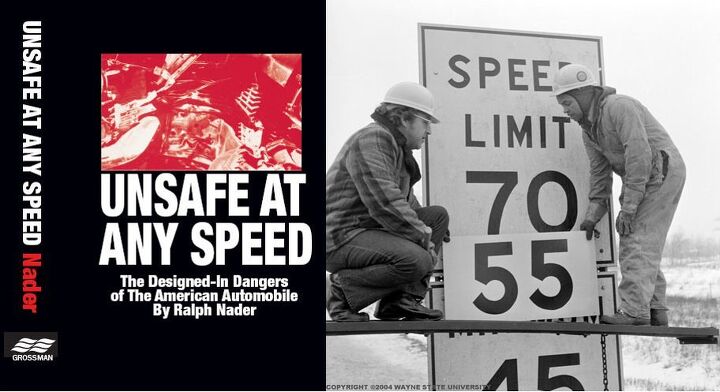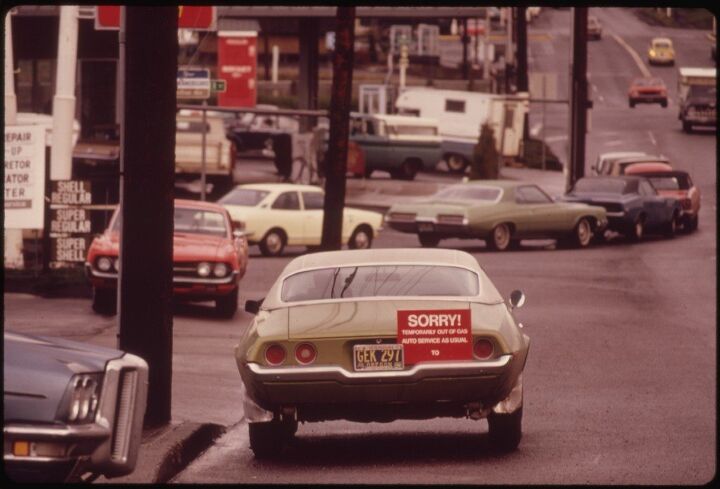#RichardNixon
Two Coincidental Anniversaries: Nader's 'Unsafe At Any Speed' Turns 50, 30 Years After National Speed Limit Abolished
On Nov. 29, 1995, having lost Congress to the Republicans in the 1994 midterm elections, President Bill Clinton reluctantly signed a transportation bill that repealed the National Maximum Speed Limit of 55 miles per hour. The NMSL was made law in 1973, during the Nixon administration, in response to the oil embargo and energy crisis that followed in the wake of the Yom Kippur War. While it didn’t precisely mandate a national 55 mph limit, the law allowed the federal government to withhold highway funds from states that didn’t lower expressway speed limits to 55, the so-called “double nickel.”
It just so happened that the next day was the 30th anniversary of the publication of Ralph Nader’s highly influential book about car safety, “Unsafe At Any Speed.”
The 1973 Oil Crisis: 40 Years Later
Forty years ago this month, the Organization of Arab Petroleum Exporting Countries (consisting of OPEC’s Arab members plus Egypt, Syria and Tunisia) began an oil embargo that would last through March of 1974.
1965 Impala Hell Project, Part 11: Son of Orange County
In Part 10, the Hell Project Impala got Fiat scoops on the hood and hit the I-5 trail again. By late 1993, the car looked more or less the way I’d planned when I started the project and had become a surprisingly good daily driver (thanks to more modern brakes and a reliable, HEI-equipped 350 engine). I still planned to do some suspension and horsepower upgrades, once the early 1990s recession relaxed its grip enough for me to land a decent-paying job, but the setup I had was fulfilling my driving needs very well. Then, in the spring of ’94, Richard Nixon died, and I decided to take the Nixon-hood-ornamented car down to his birthplace and mingle with the mourners.


















Recent Comments